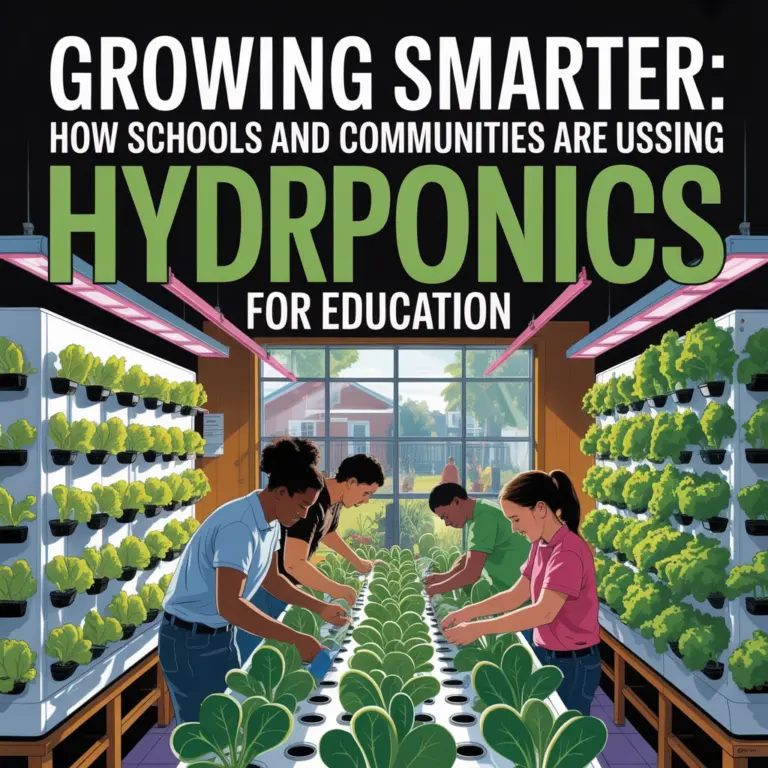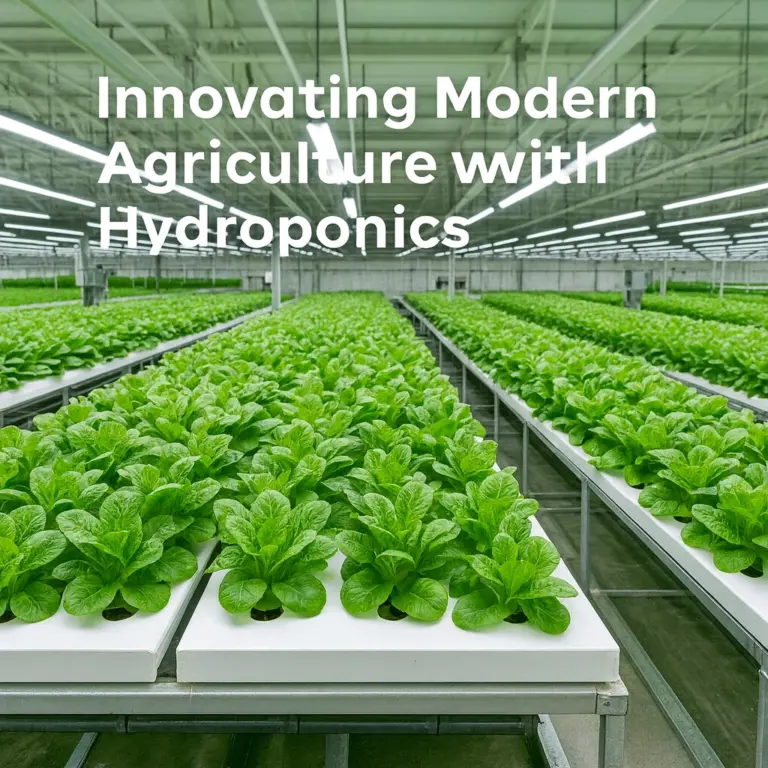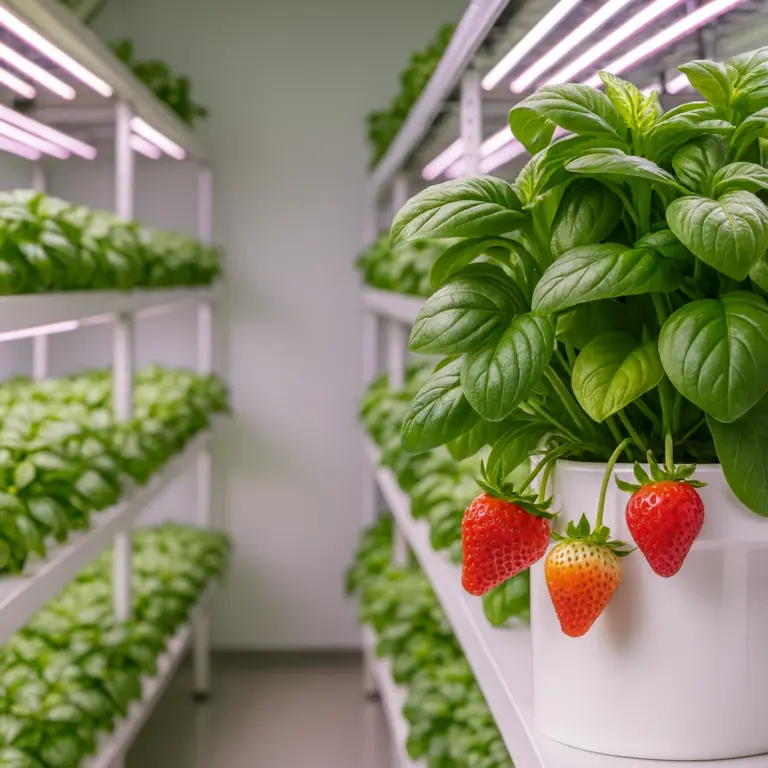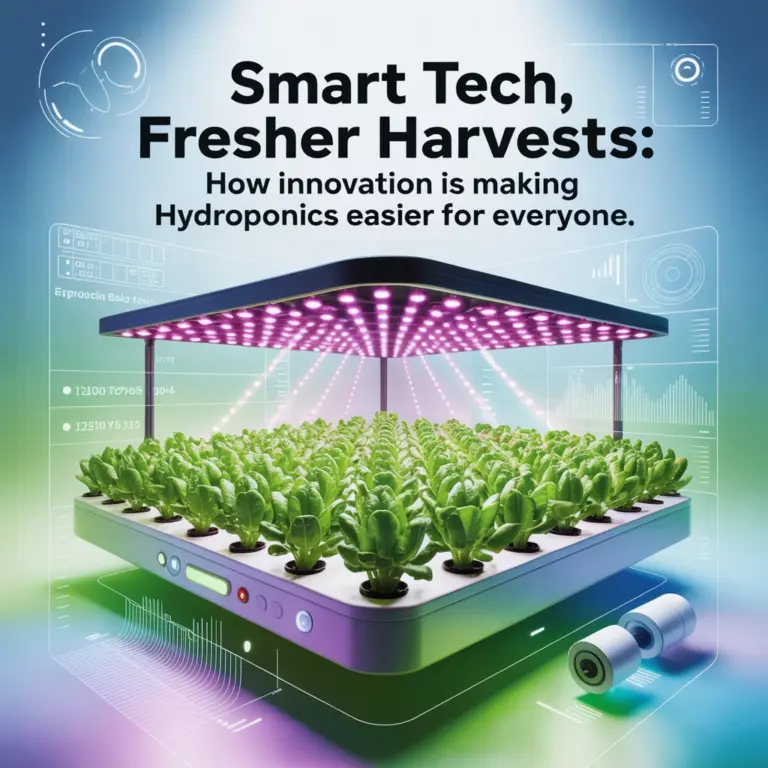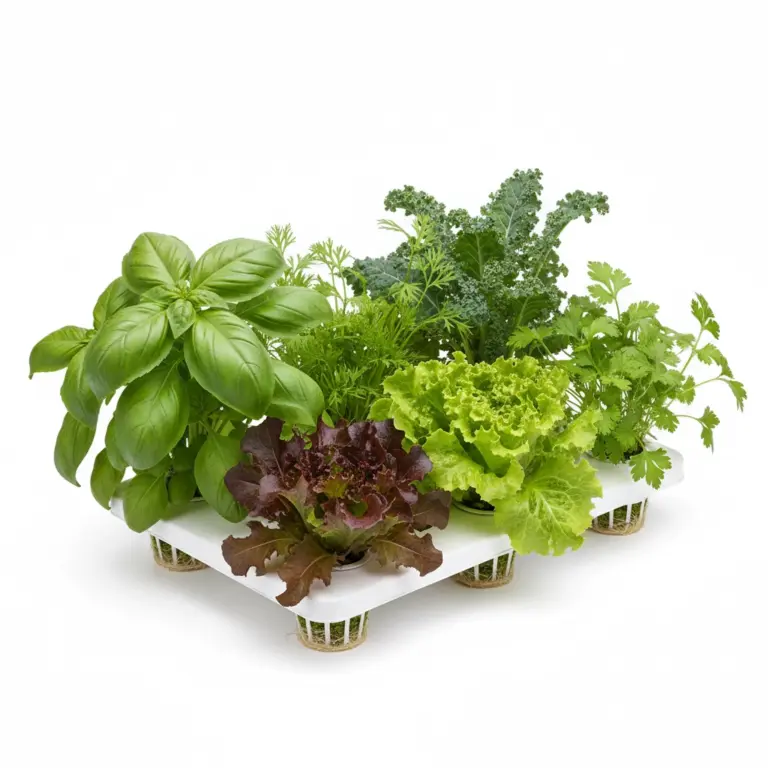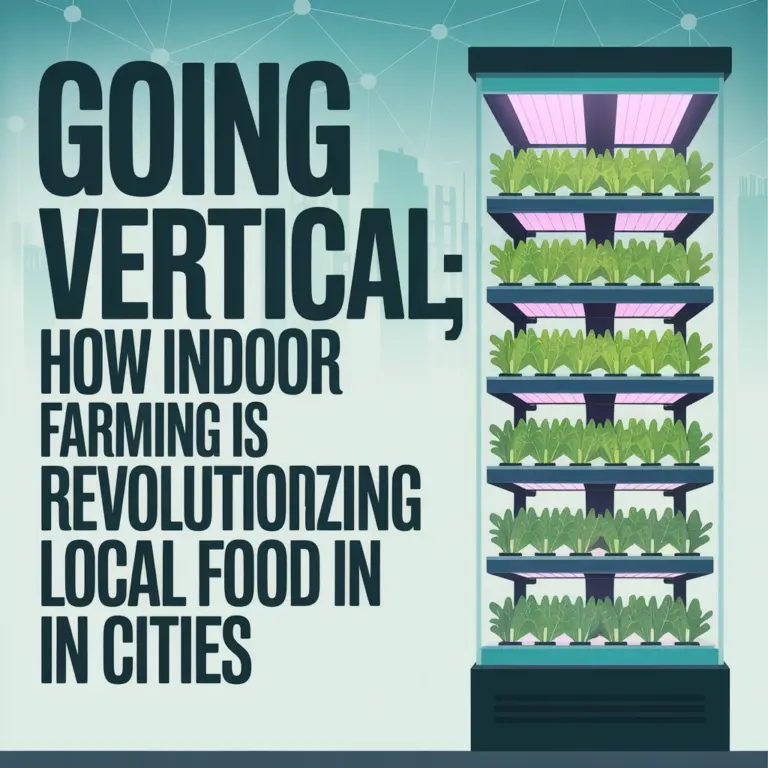Smart Hydroponics 101: How Sensors and AI Can Boost Your Indoor Harvest
What Is Smart Hydroponics?
At its core, smart hydroponics is the fusion of classic soilless growing with the latest technology. Think of it as giving your plants a set of digital “nerves”—they can “tell” you what they need, and your system can respond in real time, often without you having to lift a finger. By using sensors, microcontrollers, and artificial intelligence (AI), smart hydroponic systems make indoor farming more precise, efficient, and hands-off than ever before.
For anyone looking to maximize yields, save resources, or just get seriously geeky in their garden, understanding smart hydroponics is the next step up.
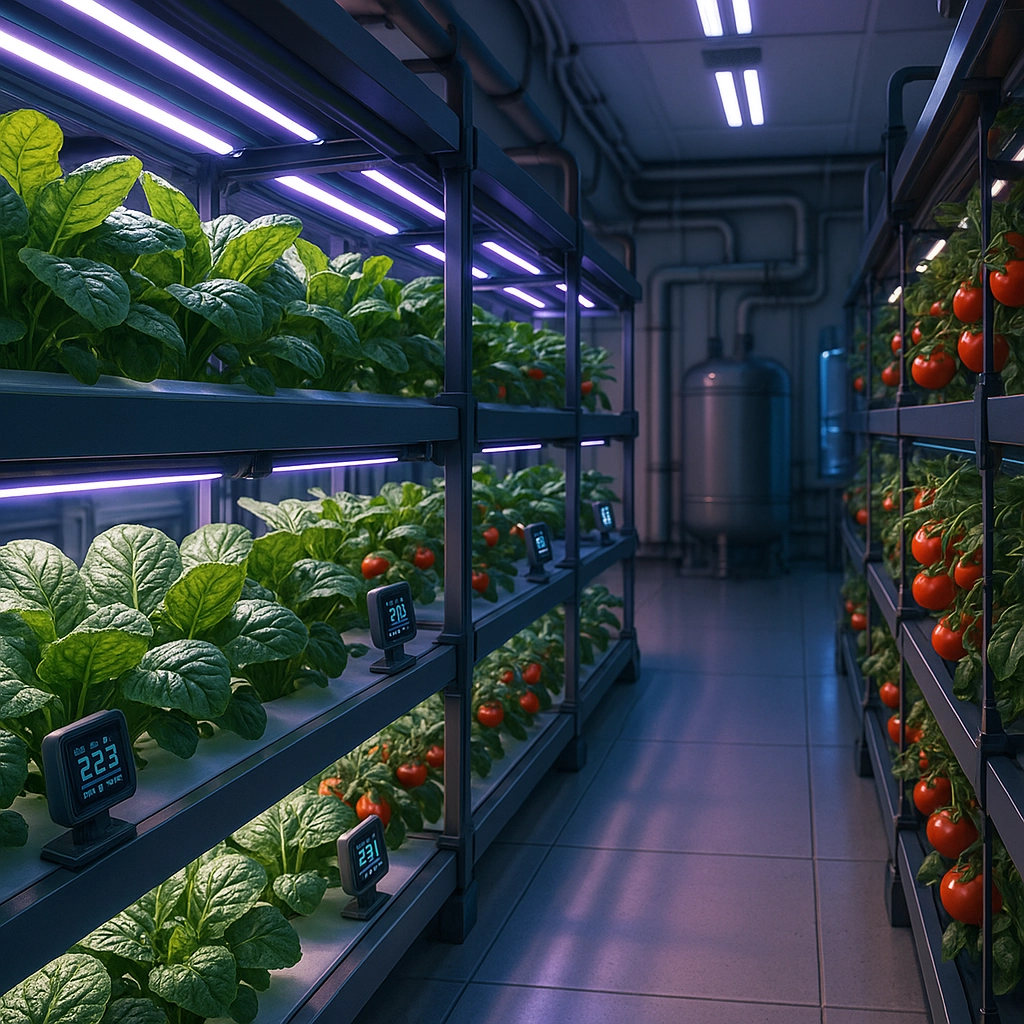
Sensors: The Brains and Brawn of Smart Growing
The heart of every smart hydroponic setup is its network of sensors. These tiny devices do the heavy lifting, gathering live data to help maintain the perfect environment for your plants. Let’s break down the top must-haves:
Water Quality Sensors
- pH Sensors: Continuously monitor the acidity or alkalinity of your nutrient solution. Keeping pH in the proper range (usually 5.5–6.5 for most veggies) is critical—if it drifts, plants can’t absorb nutrients efficiently.
- EC (Electrical Conductivity) Sensors: Measure how much dissolved mineral goodness (nutrients) is in your water. Too high or low? You know right away—and so does your system.
Environmental Sensors
- Temperature & Humidity Sensors (like DHT22 or similar): Track ambient conditions. This data is vital: If your room gets too hot or dry, plant stress and slow growth follow.
- Water Level Sensors: Always know how much nutrient solution is in your reservoir. Never get caught off-guard by a dry pump again.
- Water Temperature Sensors: Roots are sensitive; too cold or too warm can shock them. Continuous temp checks keep them cozy.
Advanced Options
- CO₂ Sensors: For high-performance systems, monitoring and sometimes injecting CO₂ can supercharge growth.
- Light Sensors: Ensure your plants get just the right amount of light, day or night, and watch for bulb failures.
These sensors work 24/7, providing real-time health checks for your plants—and giving your smart system what it needs to optimize growing.
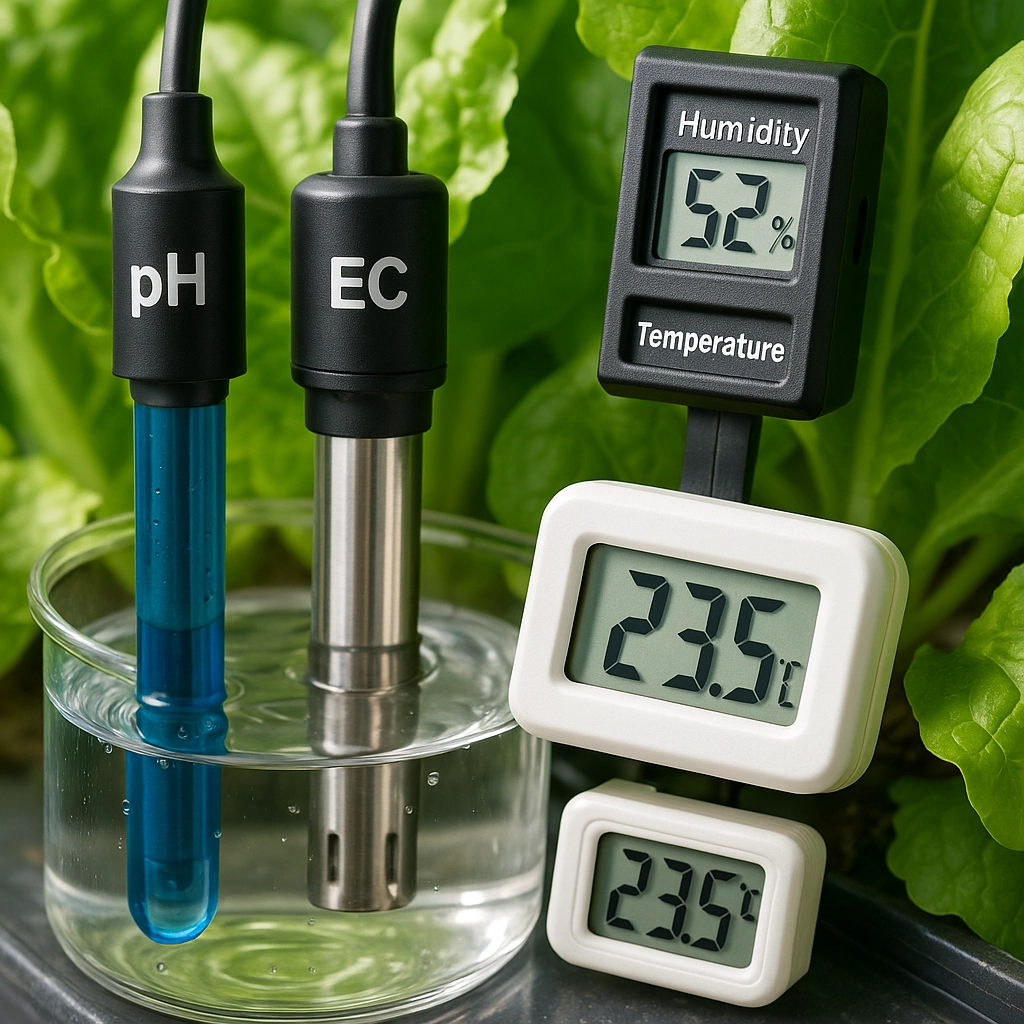
Adding AI: Smarter Systems, Better Plants
Sensors collect the data—but AI is what makes sense of it all. Artificial intelligence in hydroponics is more than just a buzzword; it brings real advantages to indoor growers:
Automated Adjustments
With AI, your system isn’t just collecting numbers—it’s proactively making changes to keep conditions perfect. Lights too dim? AI can adjust brightness. pH creeping out of range? The system doses acid or base. Low humidity? Kick on the humidifier automatically.
Predictive Problem-Solving
Smart hydroponics systems use AI to spot trends and anticipate issues before you’d notice. That means it can warn you about developing root rot, spotting bad pumps or sensors, or reminding you to restock nutrients—all before it impacts your crop.
Optimized Water and Nutrient Use
AI-powered irrigation can reduce water usage by up to 25%, saving both resources and operating costs. Because the system knows exactly what each crop phase requires, it can tweak nutrient dosages and watering cycles for each plant variety, maximizing yield with zero guesswork.
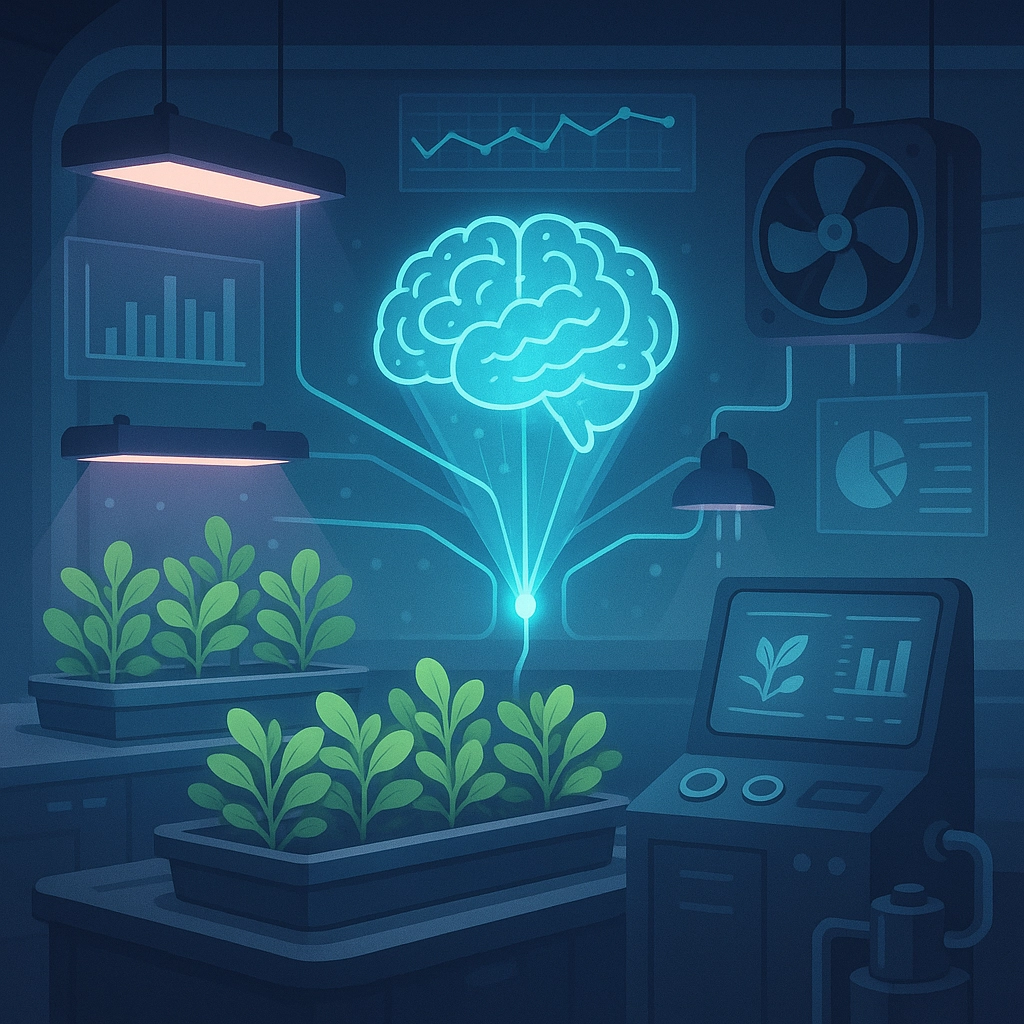
Core System Components: What You Need to Get Started
What makes up a basic smart hydroponic system? Here’s an overview of the core tech and growing gear:
Control Center: Microcontrollers
- ESP32: Acts as the “brain,” receiving sensor data and sending commands to pumps, lights, and fans.
- Relays and Circuit Boards: Let the microcontroller physically switch devices on or off.
Pumps and Air Stones
- Water Pumps: Circulate your nutrient solution to plant roots.
- Air Pumps/Stones: Boost oxygen in the water, which helps roots “breathe” and prevents disease.
Lighting Solutions
- LED Grow Lights: Highly efficient, customizable, and AI-controllable to mimic sunrise, sunset, and seasonal cycles.
Connectivity and Software
- IoT Platforms (like Blynk, Arduino IoT Cloud, or ThingSpeak): Let’s you check on your grow room anywhere, right from your smartphone.
- Custom Dashboards: Give you a friendly view of live sensor data and let you tweak settings on the fly.
Support Structures
- Plant Housings (pots, net cups, or vertical columns)
- Nutrient Reservoirs & Flexible Tubing
- Environmental Controls (fans, heaters, humidifiers)
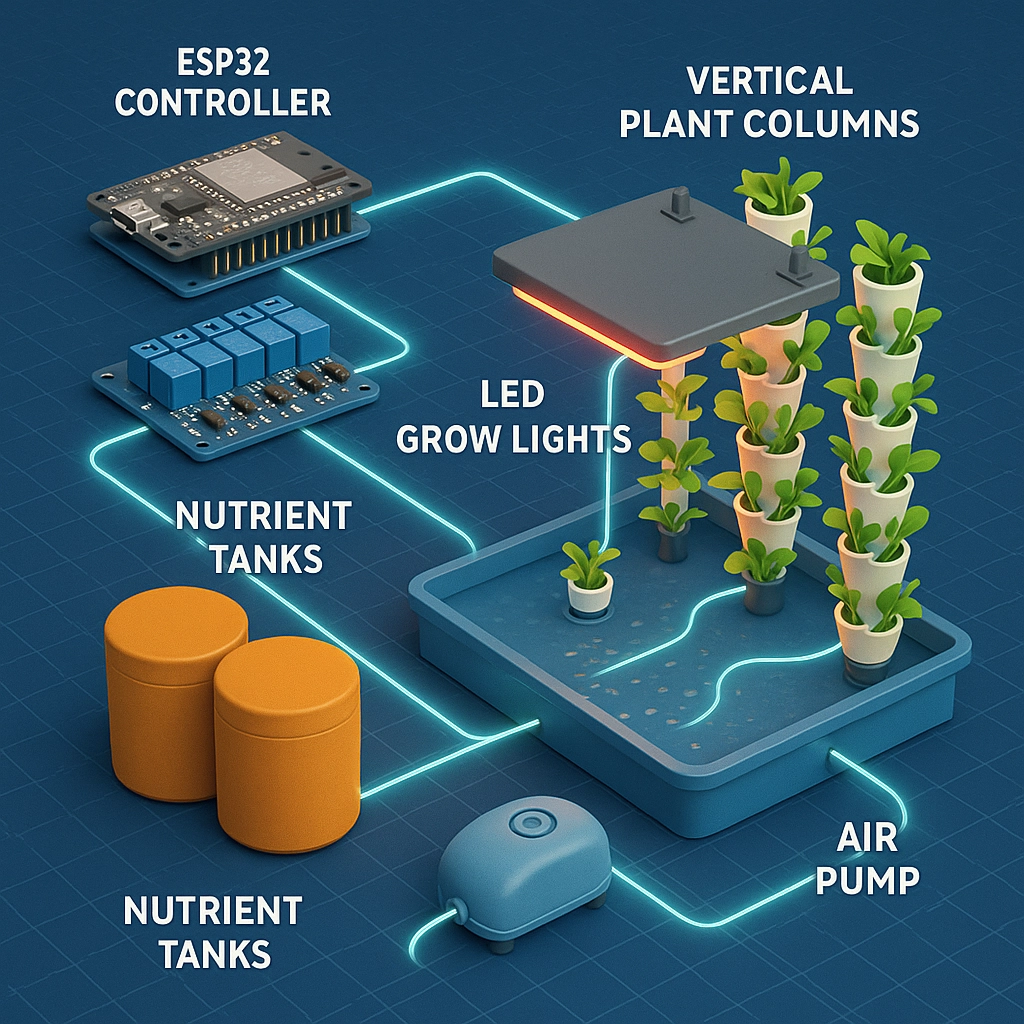
Smart Hydroponics in Action: How It All Comes Together
Imagine you’ve got a closet or tent packed with cherry tomatoes and crisp lettuce. Your pH dips a bit overnight—before breakfast, your system detects the drop, doses just the right amount of buffer solution, and notifies your phone. On a record-hot day, the system detects rising temps and increased humidity, powering up fans and reducing LED intensity. Meanwhile, AI tracks every change, learning the ideal settings to maximize your next harvest even more.
For hobbyists, this means less maintenance and more healthy plants. For commercial growers, it means consistent yields, lower costs, and crops that are less vulnerable to environmental surprises.
The Benefits: Why Growers Are Making the Switch
Resource Savings
- Use up to 90% less water than soil farming.
- Only feed nutrients as needed—no waste, no runoff.
Bigger, Healthier Yields
- Plants grow faster and stronger because their environment never falls out of the sweet spot.
- Get up to 30% higher yields with precision control.
24/7 Remote Monitoring and Peace of Mind
- Solve problems from anywhere. If something goes wrong, get real-time alerts.
- Less downtime, fewer crop losses.
Total Customization
- Grow rare or finicky plants by dialing in conditions, hour by hour.
- Automate for vacation—or tinker for perfection.
Scalable Technology
- Start small on a kitchen counter, or scale to fill a greenhouse or entire warehouse.
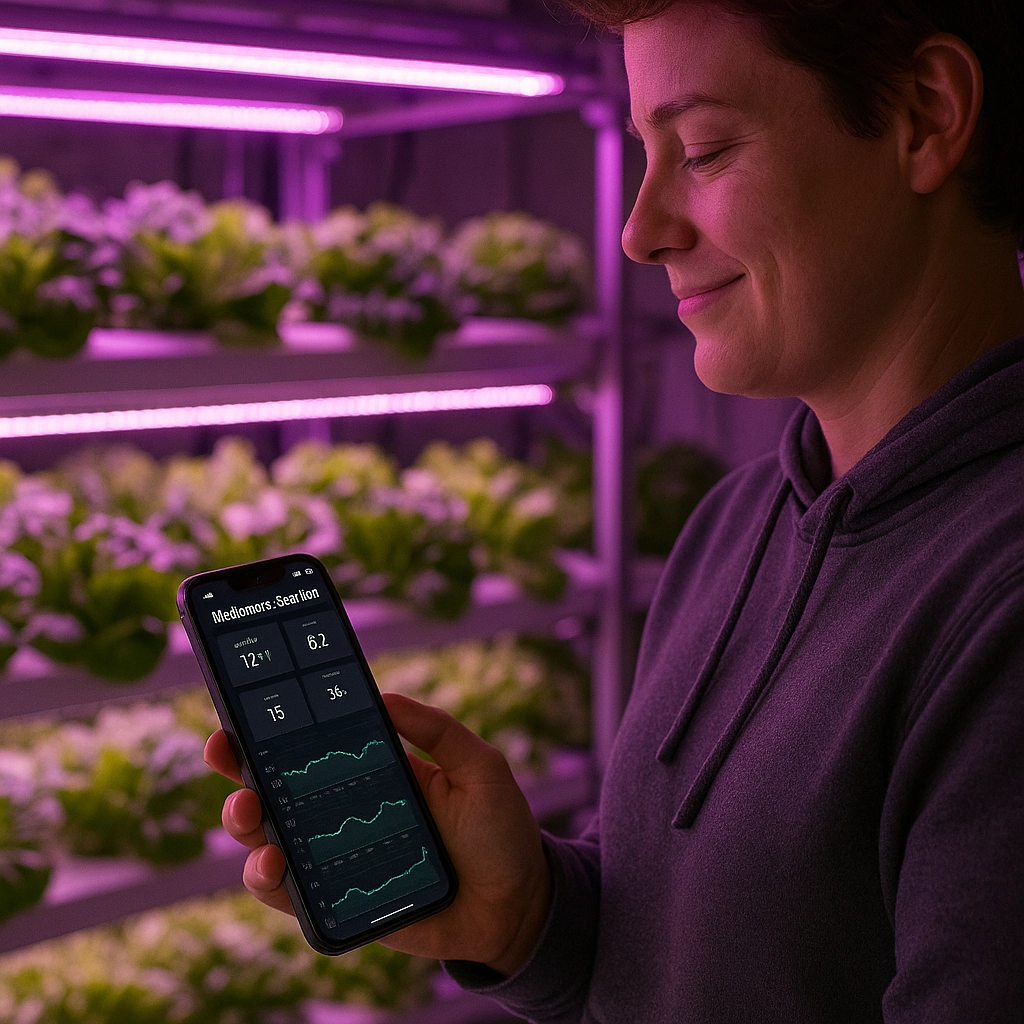
What’s Next for Smart Hydroponics?
The smart hydroponics field is charging forward fast. Expect even more advanced sensors, intelligent learning systems that auto-adjust to your preferences, and simpler “plug-and-play” kits that make next-level indoor growing accessible to everyone—no engineering required.
As demand rises for local, sustainable food, smart hydroponic technology is poised to help urban and indoor farms flourish. Whether you’re a curious home grower or planning your next commercial agriculture leap, now’s a great time to get your hands (digitally) dirty.
Want more tips, tutorials, and product news? Head over to the Titan Hydroponics Blog or check out our services page to see how we can help you build the ultimate smart growing system!
